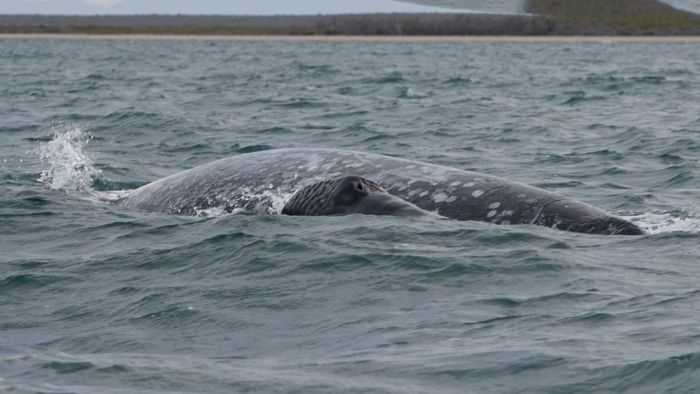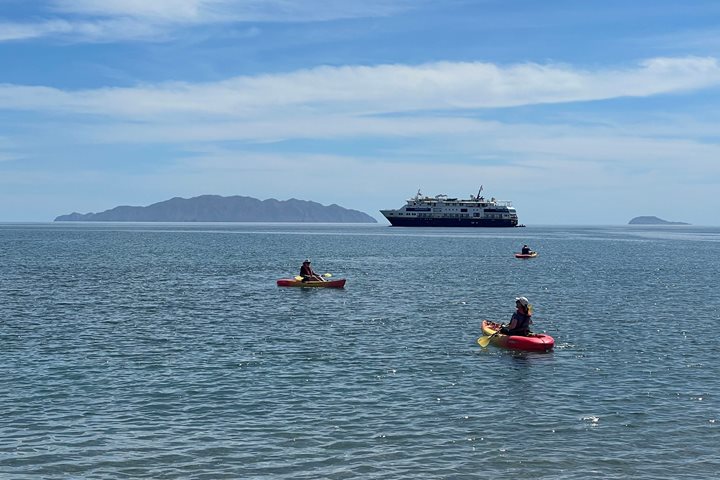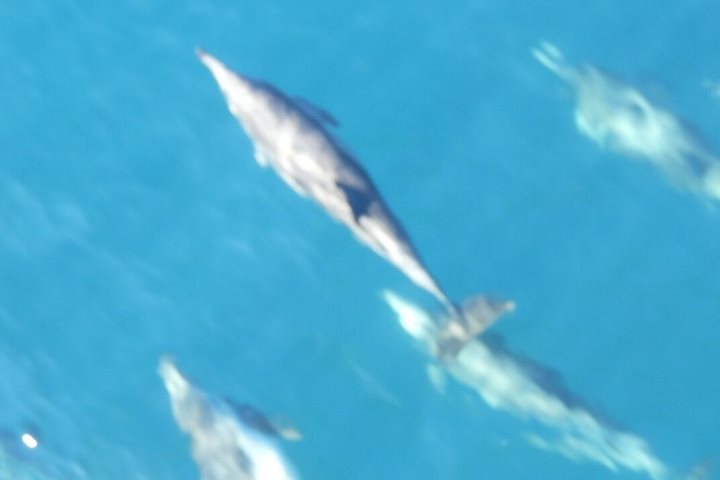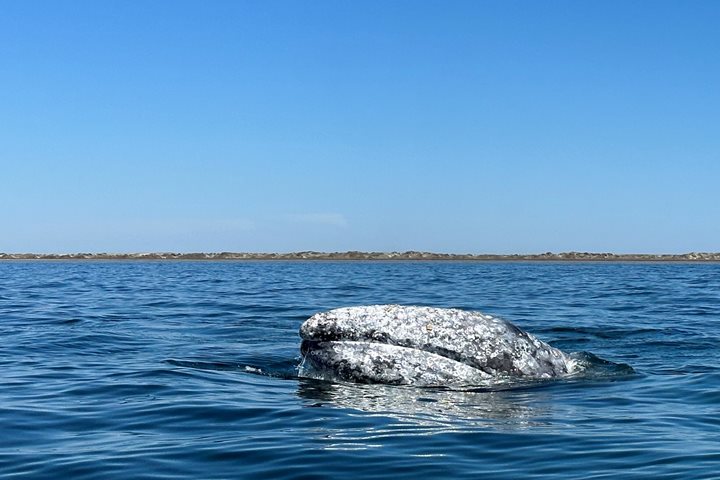We got an early start and were treated to a painted-sky sunrise as rain clouds dissipated. We spent the morning in our small boats, mingling with gray whale adults, juveniles, and females with newborn calves near the mouth of Boca de Soledad in Magdalena Bay. The calves were so new that they still had thick fetal folds in their skin from almost 12 months of gestation. Exciting behaviors we saw exhibited by the whales included spy-hopping, breaching, and some courtship from a pair of adults that was being escorted by bottlenose dolphins.
After returning to National Geographic Sea Bird, we pulled anchor and began our journey south through a narrow channel of mangroves and sand dunes, heading to the open Pacific Ocean. Along the way, in addition to spotting more gray whales, we spotted several bird species as terns, brown pelicans, various shorebirds, white ibis, a flock of small geese called brants, and magnificent frigatebirds. During transit, an onboard naturalist gave a presentation, “The Great Rip-off: The Geology of Baja California.”
As the ship left the protected waters of Bahia Magdalena, a congregation of more than 30 gray whales spread out in the water near the entrance to the bay. It was a breathtaking view—the whale, the stunning backdrop of Isla Santa Margarita to the south, and a mackerel sky sunset to the west. After a savory sit-down dinner, the captain dimmed the deck lights so we could see the details of the night sky and listen to a naturalist speak about the constellations. Guests were lulled to sleep by the gently rocking waves of the Pacific, looking forward to watching sunrise at Land’s End at the tip of Cabo San Lucas.






